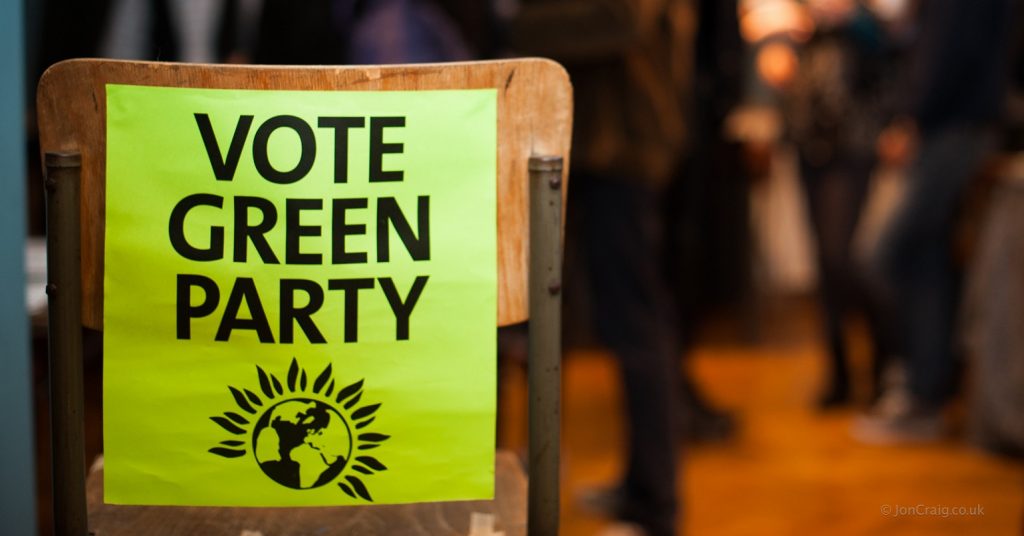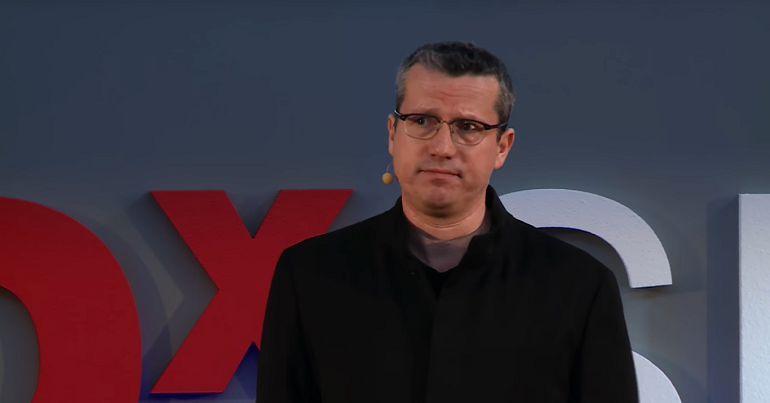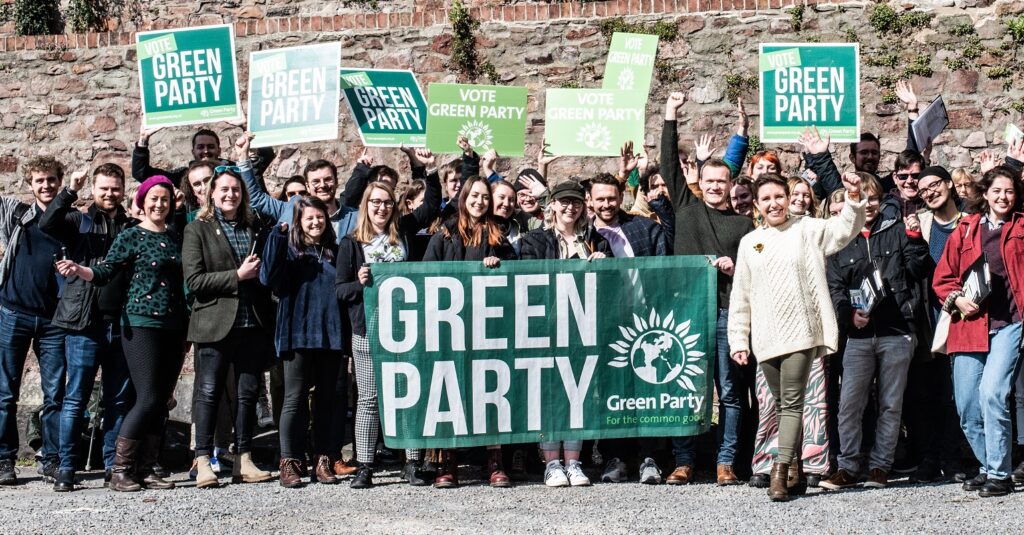How the Irish Greens got into a Coalition mess…
The Irish Greens have finally pulled the plug on the Fianna Fail led Government of the dead that has been staggering from crisis to crisis since the economy collapsed in 2008. The Irish Greens are an object lesson in the dangers of being the minor party of government for Greens around the world. Indeed there would have been a great deal for the Liberal Democrats to learn, had they not been so determined to make David Cameron Prime Minister.
Getting into government with Fianna Fail was one hell of a gamble. And sadly it’s a gamble that didn’t pay off. The Irish Greens will lose most of their seats and it is quite likely they’ll be wiped out in the forthcoming election. This is partly because the Greens were unlucky to be part of a government that saw the spectacular burst of the Irish economic bubble. But even that unluckiness is off-set by the knowledge that Greens, of all parties, should have understood that the Irish economic miracle was in fact based on unsustainable speculation and over-development.
There were, though, deeper underlying reasons why the gamble didn’t pay off. The Irish Greens weren’t just unlucky. They’ve brought a potential electoral wipe-out on themselves by making a series of strategic mistakes.
The first mistake the Irish Greens made was to badly misread their electorate. They believed that their voters would accept cycle to work schemes and home vegetable growing projects as compensation for the sacrifice of going into government with Fianna Fail. They thought their voters were environmentalists who wanted specifically environmental gains. It’s now pretty clear that their voters wanted a radical, progressive, new left alternative to the corruption, social conservatism and neo-liberal orthodoxy of the other Irish parties. It’s true that those voters saw environmentalism as part of that set of values. But the politics of Green voters went way beyond the environment. Despite delivering as much of the environmentalist agenda as anyone could expect, the Irish Greens saw their vote collapse in the 2009 European election. There is every chance they will get wiped out in the General Election.
By supporting the neo-liberal shock doctrine employed by Fianna Fail, the Greens have alienated themselves from their support. The party has lost prominent members, including Partricia McKenna and Bronwen Maher. But most importantly, they’ve been exposed as a party that plays into the old left wing critique of Greens: they gave every impression that care more about the environment than they do about people. For most Greens this is a nonsensical statement. They see the environment and people as inextricably linked. They would never dream of cutting health care for the over 70s or benefits for the under 25s – both of which are measures the Irish Greens supported. They would never participate in a government that colludes in rendition flights, But the Irish Greens have played to this stereotype. And they’ll suffer very badly for it at the ballot box.
So what happened? How did the Irish Greens get themselves into this mess?
Well, the election was exciting. The lustre had begun to come off the then Irish Prime Minister, Bertie Ahern. One of the few politicians capable of matching the charisma of Blair or Clinton, Ahern had been caught accepting undeclared loans from friends. It looked like his party, Fianna Fail might lose power. Fianna Fail have been the dominant political party in Ireland since the 1920s. They are one of the few parties in the world to have won proportional elections outright. And they’d been in government in Ireland for 25 out of the past 30 years.
The alternative was a Fine Gael/Labour/Green coalition. Until the campaign this combination would have been an odds on favourite. The Greens were so certain that they’d be able to form this coalition that their then leader, Trevor Sergant promised he wouldn’t go into government with Fianna Fail.
Sargent’s promise is significant as the Greens ran a campaign based on their anti-corruption credentials. Credentials that contrasted with the grubby image of Fianna Fail. Famously former Fianna Fail Prime Minister Charlie Haughey owned an island with a mansion on the basis solely of his Prime Ministerial salary of £67,000 a year. Supermarket magnate Ben Dunne notoriously ‘forgot’ giving Haughey over £1m in cash. For Greens, this behaviour was an anathema. And it made sense that they’d not go into government with Fianna Fail . And that’s before giving consideration to the get-rich-quick approach Fianna Fail took to the economy.
As the campaign progressed it became more and more obvious that Fine Gael leader, Enda Kenny was not Prime Ministerial enough. He lost ground badly to the suave Bertie Ahern, and Fianna Fail duly ended up as the largest party again. The Greens held 6 seats, losing in Cork but winning in Carlow/KilKenny. Their victories, as in previous elections had relied on picking up the largest number of transfers in the Single Transferable Vote proportional system. The final result was Fianna Fail 62, Fine Gael 40, Labour 17, Greens 6, Sinn Fein 4, Progressive Democrats 2, Independents 10.
This put enormous pressure on the Greens who were the only party big enough to allow a two-party-plus-independents coalition (partly because some independents and Fianna Fail refused to deal with Sinn Fein). At first it looked like Fine Gael might be able to put together a coalition of FG, Labour, Greens and Independents. But this was too reliant on Independents who traditionally drive a very hard bargain for their constituency, and didn’t attract support from the Progressive Democrats. The votes just didn’t stack up.
And with the votes not stacking up, so the pressure on Greens increased. I was very reluctant to believe that the Greens would deal with Fianna Fail. The gaping ideological chasm between the parties and Trevor Sargent’s categorical refusal to join a Fianna Fail led government convinced me that there was little chance of a deal being done. Fianna Fail and the media sought to shame the Greens into government by asking what the point of a Green Party was if it wouldn’t go into government when the planet needed saving.
Eventually Greens gave in to this pressure. Trevor Sargent resigned as leader, allowing John Gormley to take over and they started serious talks to form a coalition. As a member of the Irish Green Party and an employee of a Green Member of the Scottish Parliament I was very surprised and pretty horrified. I’d have voted against the coalition at the General Meeting called to approve the deal. But being in a party requires compromises. And I thought that the Greens would have driven a sufficiently hard bargain to make this work. There were some good proposals in the coalition agreement including introducing local taxation, reform of party funding and a carbon tax. The Greens might even emerge as a more credible party – a party of government.
It’s easy with 20:20 hindsight to see that 2007 was the wrong time to go into government. Had Greens stayed out they would now likely be on course to win between 10-20 seats in the next election. They’d be able to argue for much stronger measures than they did in 2007. Their gains in the current government are now likely to be thrown out by the new government, resulting in no net gain and the destruction of their party. The first offer for Greens to go into government is not always the best one.
There is another profound lesson in this for Greens around the world. It is that choosing your coalition partner is vital. Greens elsewhere have benefited from entering coalitions. In Iceland the Left-Greens have been able to play a role in reconstructing the country after a crash on a par with Ireland’s. The German Greens were able to recover from some bad decisions during their time in coalition with the Social Democrats to record record poll results. But they drove a much better bargain than the Irish Greens. And most importantly they had the right partner. Greens can prosper in coalition with centre-left parties. In Ireland they’ve failed as a result of a coalition with a neo-liberal party.
In Scotland this means it will be very difficult for Greens to find an appropriate partner. Both the SNP and Labour are absolutely committed to the neo-liberal approach championed by Fianna Fail. While both make social democratic noises, at heart both are in favour of the growth-at-all-costs dogma. That’s why they supported the Trump golf course. That’s why they are in love with big road projects. Labour have a nasty authoritarian approach to justice. The SNP were vocally in the thrall of Ireland’s utterly unsustainable economic model until it became clear how catastrophically damaging it was.
Scottish Greens will find it very difficult to support either a Labour or SNP led government. The concessions will be small and will likely play to the one dimensional environmentalism that the Irish Greens sold out for. The sacrifices will be huge. The survival of the Scottish Green Party is far more important than a short period in government. I’m sure that’s what the Irish Greens will conclude once the dust settles on their period in government. Having joined a coalition in haste they’ll have plenty of leisure in which to repent.








Ciarán is right to say that the banking crisis is only part of the problem. Unfortunately what the Irish Greens have done is written themselves out of Irish politics just as we need a Green voice more than ever.
Bruce is right about the foolishness of adopting macho austerity measures. I’ve never understood why parties of the left do it. And the consequences are almost always a disaster (as they were for UK Labour last year).
I think it may be more difficult for the Greens to come back than you think though. Which is a pity, because there’ll be lots of voters to the left of Labour that won’t vote Sinn Fein for a Green party to pick up.
The Irish Greens can try to claw their way back to five to ten, as a parliamentary enviro party angling for transfers, or they can abandon the neoliberal balanced budget empty fictions that European parliamentary Green parties seem to adopt to “look serious” and aim square at a big chunk of the electorate that is going to be abandoning Labour in the next election in the regular and predictable backlash after once again going into coalition as junior partner to Fine Gael.
Oh, it’s a depressing time. The Irish Greens have been wiped out in parliament but it’s not the end – at all. The problems Greens everywhere try to highlight aren’t going to go away. This credit crunch/property crash thingie is huge but in seriousness it pales compared to the challenges the world faces in climate change, mismanagement of resources, pollution, mass extinction of species.
We only lose when we give in.
The piece exhibits a poor understanding of irish politics.
Well thank you for that brilliantly argued and comprehensive response breffni. Don’t suppose you’d like to share with us all exactly what Peter got wrong? or how we should understand Irish politics? No?…
Interesting piece. As an SSP supporter I’ve long thought that the Scottish greens and the ssp should work together to promote issues of mutual interest.
One example is the message that in a lot of regions in Scotland the labour party look likely to do so well in the condtituency battles that people voting labour on the list vote will be wasting their votes in the tens of thousands. If they could be persuaded to vote green or ssp, we could end up with more diversity in the parliament and hopefully some progressive ideas getting a chance.
Great post Peter. Spot on analysis & far from gloating I would say. More of a lamentation.
Gloating? how are we supposed to learn from mistakes if we don’t talk about them? As Peter says, with the benefit of hindsight going into a coalition with FF was clearly a mistake for the Irish Greens, in the same way that I think it is already becoming clear that going into coalition with the tories was a mistake for for the British lib-dems, but going into coalition with the SPD arguably wasn’t for the German Greens (at least in electoral terms). If we are going to avoid making similar mistakes in Scotland we need to learn the lessons, and that means being honest about failures as well as successes.
I rate Pat who is standing in Wicklow very highly!
‘Cllr Pat Kavanagh, declares her intention to stand in General Elections for Wicklow Constituency
by Cllr Pat Kavanagh on Friday, January 21, 2011 at 4:28am
Elected to Wicklow Town Council in 2009 as a Green Party candidate, Pat Kavanagh resigned from the Green Party in March 2010, having campaigned within the party to vote against NAMA and the bank bailouts. Since then, Pat has been involved in the setting up of a new federated political party, Fís Nua (New Vision) which will be Ireland’s newest registered party before the 2011 General Elections.’
No gloating here. The coalition in Ireland is a disaster for Green politics. Nothing else. But it’s important to understand why it’s a disaster.
I hope some day there’ll be a party in the Dail that genuinely represents Green politics in a way the Irish Greens so conspicuously failed to do. The sooner the better.
My analysis here, I should have shouted louder and earlier
although I was pleased that from day one of the coalition most prominent of the GPEW opposed this disaster
http://www.morningstaronline.co.uk/index.php/news/content/view/full/93936
I am certainly not wishing them luck, they have wrecked green politics in Ireland.
Best of luck to them in the election. Gloating about another Green party’s difficulties isn’t for me, although I too would have voted against the deal with FF.